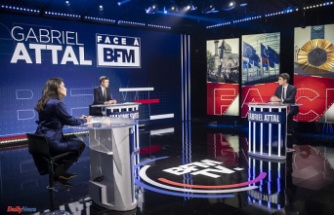Where do wealthy clients in Germany get the best advice on private banking and asset management? The big test by ntv and Focus-Money provides the answers.
ntv - together with Focus-Money - took a close look at the crème de la crème of demanding private customer care this year - and thus for the 16th year in a row. A total of 28 banks and asset management companies passed the comprehensive quality check with flying colors and received the title "Outstanding Asset Management". That's four more than in the previous year - which speaks for the increasing quality of advice in this country.
It is also positive that more than a dozen prize winners from 2021 were able to convince again. A total of 35 banks and asset management companies from six major German metropolitan areas were tested: Berlin, Frankfurt am Main, Hamburg, Cologne/Düsseldorf, Munich and Stuttgart. The commissioned Institute for Wealth Creation (IVA) in Munich once again sent out test persons who asked the banks or asset management companies for a consultation in the summer of 2022 - this time with the desire to invest 960,000 euros in the long term and also to bet on shares. This usually required two appointments.
The evaluation of the recommendations once again brought to light, in some cases, clear differences in the setting of priorities. Only the asset classes "equities" and "liquidity" appeared in all investment proposals. "It is also remarkable that for the first time in the history of this test there were no bonds at all in a quarter of the investment proposals," emphasizes Dirk Rathjen, member of the IVA Board of Management, and explains: "In this situation, the turnaround in interest rates on the capital markets and the expectation reflect rising interest rates."
As in previous tests, the asset classes "real estate" and "derivatives" played no role in most of the investment proposals. Almost two-thirds of the providers used "raw materials" as an asset this time. The largest gap between the minimum and maximum share within an asset class was found in equities. Remarkable: Despite the mood of crisis on the stock exchange, the rate was 100 percent in one case. In the bond segment, the range was between zero and 40 percent.
The recent upheavals in the stock and bond markets may have reminded some investors how important it is to limit risk when building wealth. The topic should therefore also have a correspondingly high priority in the consultation. The bad news: In about one sixth of the investment proposals examined, there was hardly any risk clarification.
The good news: where it clearly took place, at least simple classic risk measures were discussed in two thirds of the cases - in about 43 percent of them even "very good" or "good". In almost 30 percent of the recommendations, the consultants presented historical stress tests. Prospective - that is, future-oriented - tests were provided by 15 percent.
It should be clear that when it comes to wealth accumulation, professional advice and support is not available for free. However, the costs should match the service provided. The fact is: A relatively wide range was observed for all types of costs in this year's test - which is probably also due to the quite different focal points in the product categories. In some cases, individual titles were used to a very large extent, which led to rather low "internal" costs. In the case of investment proposals that increasingly use active investment funds, however, these costs were significantly higher. On average, the annual total costs this time amounted to about 1.7 percent.
In principle, tax aspects played only a subordinate role in the wealth management test, as the testers pointed out right at the beginning that the freely disposable assets were already taxed. However, there were definitely still starting points for individual tax information. Result: In all cases, tax aspects were addressed by the consultant at least to some extent - in more than half with a "good" technical quality.
The IVA evaluated all documents based on eight evaluation dimensions (holistic, customer orientation/comprehensibility, risk clarification, costs, transparency, portfolio structure, product implementation). Points could be collected for each criterion - as long as the characteristic was given in a positive way.
In this way, a score could be determined for each bank/asset management company. To simplify things, this was transformed into a school grade scale from 1 (very good) to 5 (poor). This resulted in a sub-score for each evaluation dimension, which shows how well the respective bank or asset management company performed. The overall grade was the weighted average of all eight partial grades.
These 18 banks and asset management companies showed outstanding performance in this year's test. In alphabetic order:












